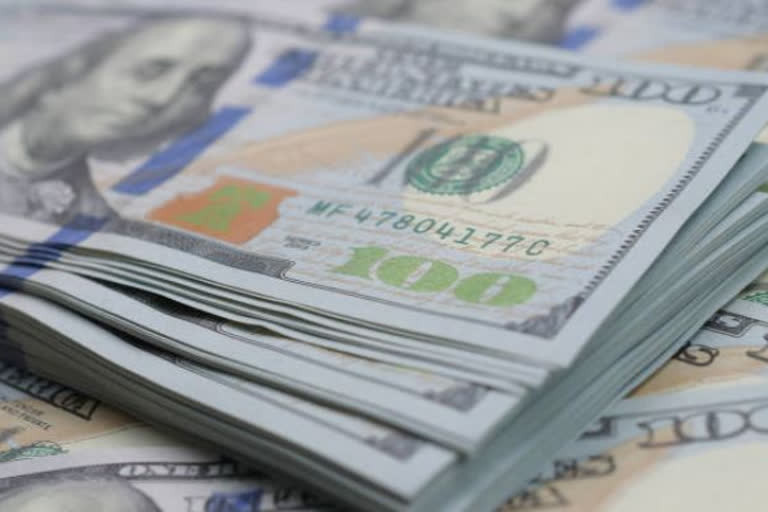Mumbai: The global economy is likely to face more financial pains as the dollar swap cost has spiked to historic levels, reflecting the increased need for currency hedging by governments, corporates and investors outside the US, warns a paper by the Bank for International Settlements (BIS).
In the wake of the coronavirus pandemic, which has brought the world to a standstill, the dollar premium has started shooting over the roof, forcing the US Federal Reserve to open forex swap lines with at least five central banks on March 15.
Governments across the world are looking to raise funds in efforts to fight against the pandemic, that has killed more than 1 lakh people besides infecting millions in different parts of the world.
The paper by the Switzerland-headquartered BIS, often described as the central bank for central banks, noted that dollar funding cost in foreign exchange markets has risen sharply, reflecting demand and supply factors following the pandemic and the currency hedging needs of corporates and portfolio investors outside the US.
Over The Counter (OTC) derivatives data available with the BIS shows that outstanding global debt at the end of June 2019 stood close to USD 86 trillion, with forex swaps accounting for an estimated three-quarters of the total amount.
Not surprisingly, the dollar is almost always one of the two currencies exchanged (89 per cent) and three-quarters of it are under-one-year maturity.
Nearly 89 per cent of the USD 86-trillion global debt pile is denominated in the greenback, which means any increase in the dollar swap premium will have an equal amount of additional interest burden on governments, corporations and other borrowers, as per the paper.
There can be more financial pains for the global economy as the dollar swap premium spikes, heavily burdening those nations beyond the US Fed Reserve's dollar-swap lines, it said.
The US Federal Reserve opened forex swap lines with the European Central Bank, Bank of Japan, Bank of England, Swiss National Bank and the Bank of Canada on March 15, bringing down the massive premium to some extent.
Still, broader policy challenges remain to ensure that dollar funding markets remain resilient and that central bank liquidity is channelled beyond the banking system.
Read more:Equity markets may see volatility in holiday-shortened week ahead: Experts
"Since the onset of the pandemic, dollar funding cost in forex markets have risen sharply, approaching levels last seen during the 2008 crisis.
"One such measure is the forex swap basis, which is the difference between the dollar interest rate in the money market and the implied dollar interest rate from the forex swap market where someone borrows dollars by pledging another currency as collateral," the paper said.
A negative forex swap basis means borrowing dollars through the swaps is more expensive than borrowing in the dollar money market, the paper said, adding that in normal times, the swap basis is close to zero, as an arbitrageur can exploit the basis and supply dollars in the swap market to pocket the difference.
"A large negative basis reflects a scarcity of dollar funding," it said.
This pre-agreed exchange rate is called the 'forward rate', and defines an implicit interest rate on the dollar relative to that in euros given the current spot exchange rate and converts domestic currency into dollars, thereby gaining access to dollar funding on a currency-hedged basis.
The widening of the swap basis has been evident especially at short maturities.
The three-month basis has widened to as much as 144 bps for the yen, 85 bps for the euro, 107 bps for the Swiss franc and 62 bps for the pound. Three-month forex swap basis against the dollar calculated exploiting the covered interest parity condition as the spread between three-month dollar Libor and three-month forex swap implied US dollar rates, the paper said.
Hedging at USD 2 trillion of the USD 86 trillion of debt into dollar portfolio would require rolling USD 960 billion in dollar swaps every three months, or USD 320 billion every month. But supply of hedging by global banks has fluctuated with the risk capacity of financial intermediaries, the paper noted.
(PTI Report)



